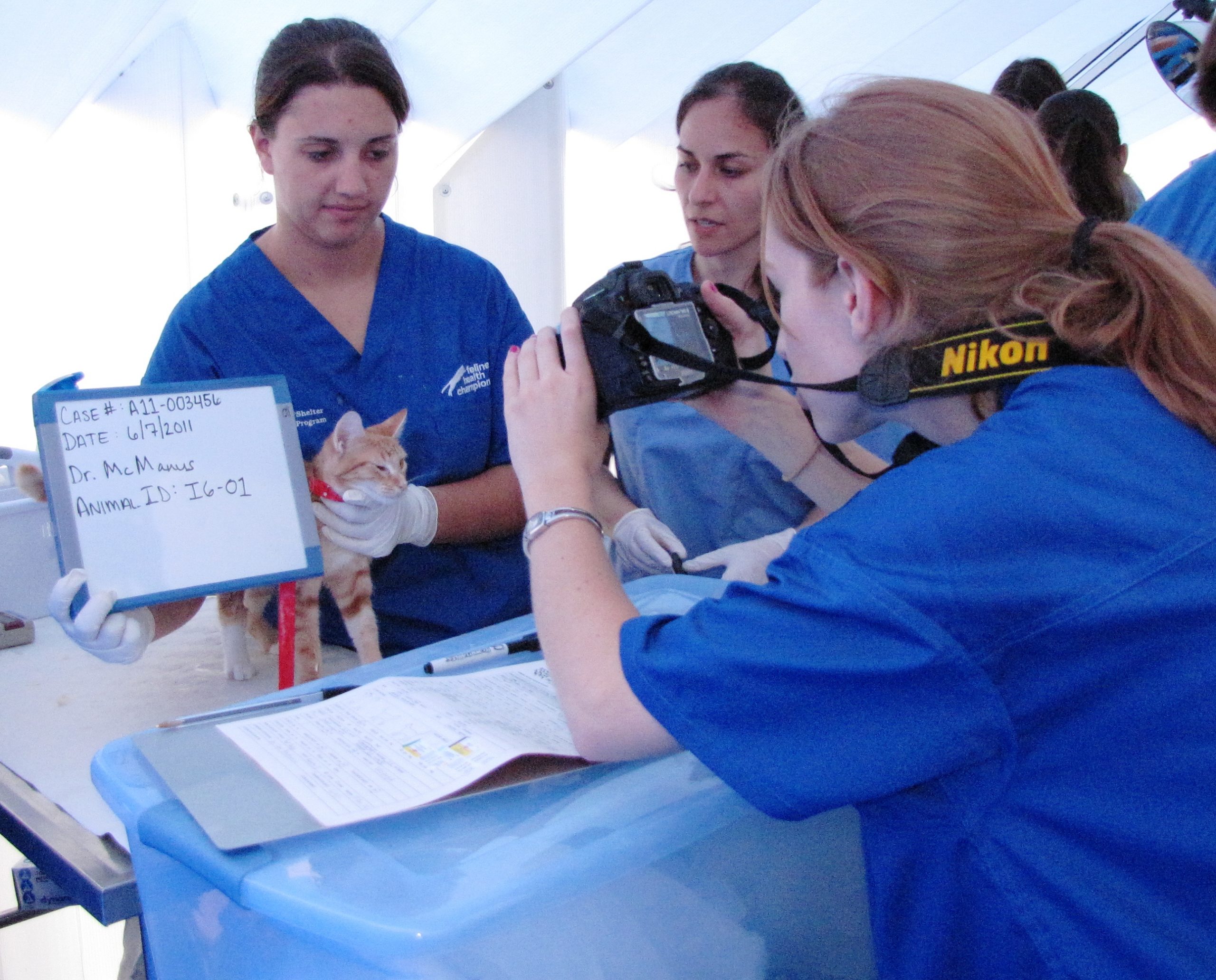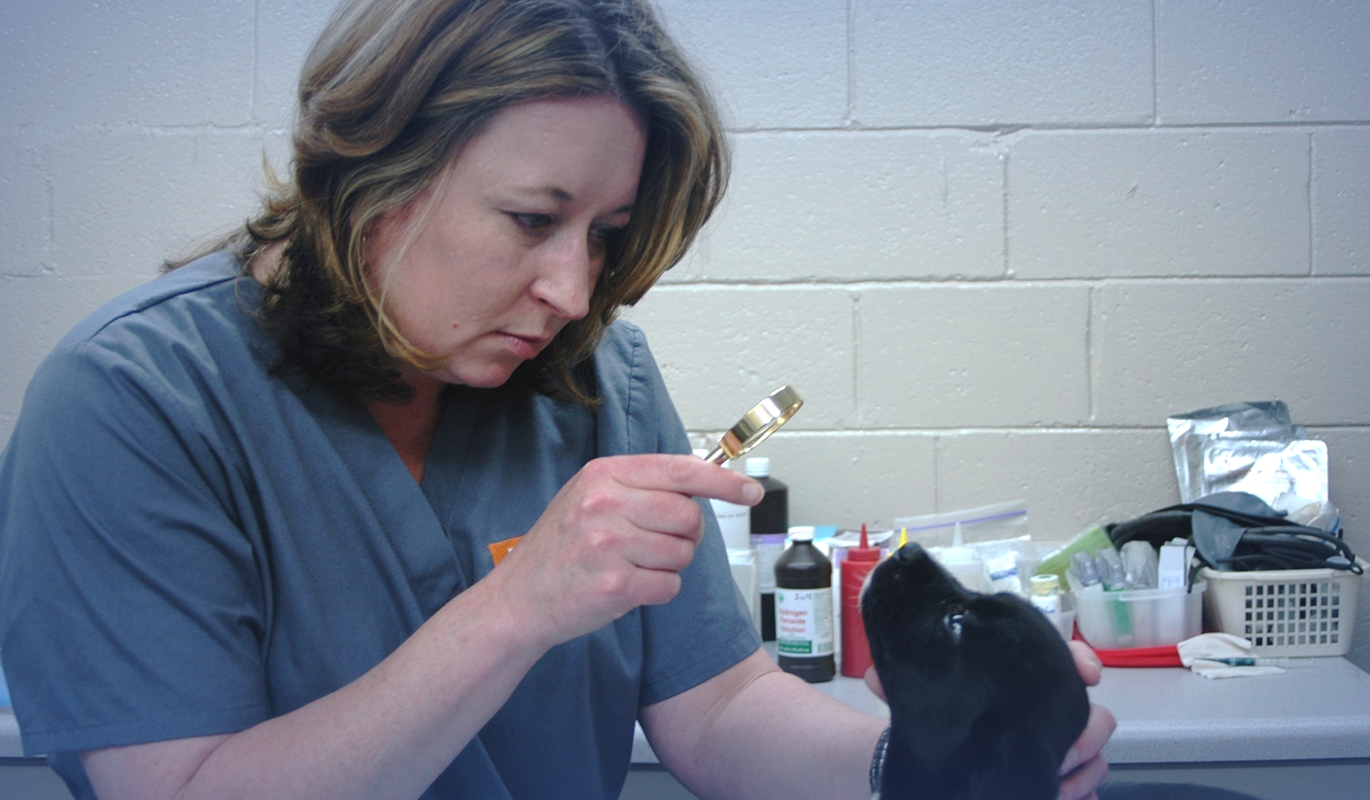Module 3: The Case of the Embedded Collar
The Clinical Forensic Examination
The clinical forensic examination is a methodical and detailed physical exam performed to thoroughly document the animal’s condition and search for case-specific evidence. Two unique components of the clinical forensic exam that differentiate it from routine physical exams are forensic photography and evidence collection.
Forensic photography is utilized to:
- Identify the victim
- Show the victim’s condition at the time of examination
- Document injuries and evidence that cannot be preserved or left unaltered
- Document injuries or conditions before and after medical intervention
The photographic documents are evidence for a court of law.

The basic clinical forensic exam steps are:
- Obtain case number and animal number from law enforcement or the investigator
- Write case-specific information on a dry erase board (photo board)
- Take photograph of the photo board with the animal
- Take overall photographs of the animal’s body
- Perform physical exam
- Take orientation and close-up photographs of any lesions or abnormalities
- Collect samples for diagnostic testing
- Collect and preserve any evidence on the body

Let’s walk through the steps in more detail…

